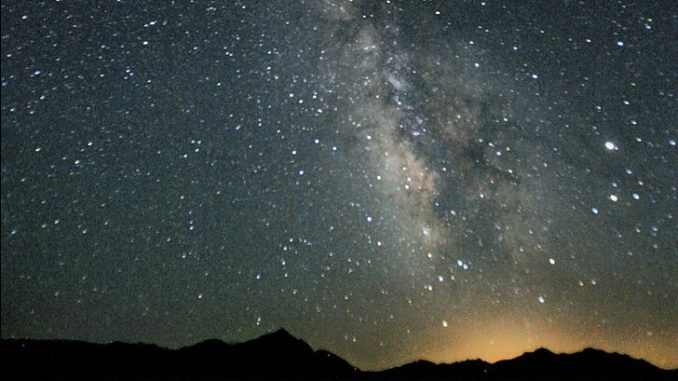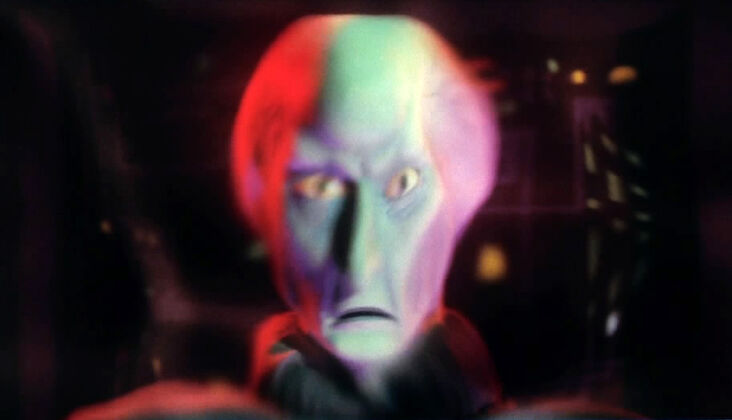
In 1961, radio astronomer Dr. Frank Drake created an equation intended to get people thinking and spark a conversation about how many technological civilizations might currently exist on exoplanets in our galaxy, the Milky Way.
The Drake Equation looks like this:

It reads, “The number of civilizations in the Milky Way Galaxy whose electromagnetic emissions are detectable” (N) equals “The rate of formation of stars suitable for the development of intelligent life” multiplied by “The fraction of those stars with planetary systems” multiplied by “The number of planets, per solar system, with an environment suitable for life” multiplied by “The fraction of suitable planets on which life actually appears” multiplied by “The fraction of life bearing planets on which intelligent life emerges” multiplied by “The fraction of civilizations that develop a technology that releases detectable signs of their existence into space” multiplied by “The length of time such civilizations release detectable signals into space”.
Obviously, assumptions and outright guesses must be made before it’s possible to plug any numbers at all into the equation’s seven variables. Thus, whatever number N the equation yields is going to be a wild donkey’s guess. Nevertheless, the Drake Equation or a modified version of it is useful as a thinking tool for thought experiments.
Using the Drake Equation as a starting point, scientists Tom Westby and Christopher Conselice calculated the “likely number of Communicating Extra-Terrestrial Intelligent (CETI) civilizations in our Galaxy by utilizing the latest astrophysical information”. Their paper, The Astrobiological Copernican Weak and Strong Limits for Intelligent Life was published June 15, 2020, in The Astrophysical Journal.
While the Milky Way Galaxy is about 14 billion years old, the Earth and our Solar System are only 4.5 billion years old. The researchers found that only 3 percent of the billions of stars in our galaxy are 5 billion years old or less. The remaining 97 percent are older, and often much older.
They assumed 5 billion years was roughly the length of time it takes for a technological civilization to develop and that life began soon after a planet forms, as was the case on Earth.
They also assumed that a technological civilization would not survive forever, so stars older than 5 billion years old were assumed unlikely to still harbor a living technological civilization.
Another factor taken into consideration was how metal-rich a star and its orbiting planets were, as those are the same conditions humanity was born into.
Bottom line: when the team crunched the numbers the anwer that came out was 36. Thirty-six possible technological civilizations in a galaxy estimated to be between 170,000 and 200,000 light years across, containing somewhere between 100 to 500 billion stars. The team played with the uncertainty of the variables a little, and found that there may be as few as 4 technological civilizations or as many as 211. When they further assumed that life could begin sometime after a planet was 5 billion years old or older, the number increases to 928.
In the classic science-fiction trilogy Hitchhiker’s Guide to the Galaxy by Douglas Adams, humanity built Deep Thought – the most powerful computer ever designed – for the sole purpose of determining the meaning of “Life, The Universe, and Everything” (the third book of the “five-volume trilogy” – Adams was a card). The profound answer that Deep Thought came up with in response to this ultimate question was “42”. How cool would it have been if the number of exocivilizations that this research team calculated had turned out to be “42” ?

Question of the night: Humanity meets exocivilization – good or bad idea? (Minimum 500 word essay, double spaced. Spelling and puncuation count.) 🙂
